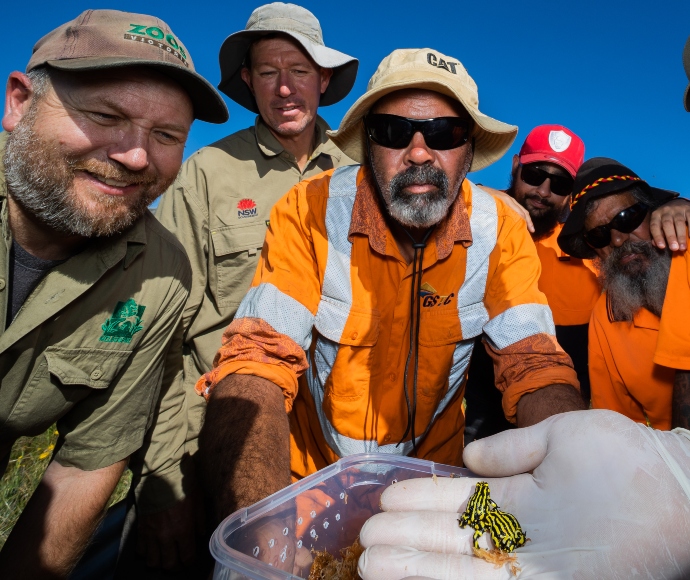The population of one of Australia’s most iconic but endangered frogs is set to receive a boost, with 100 southern corroboree frogs released in Kosciuszko ³Ô¹ÏÍøÕ¾ Park this week.

NSW Department of Planning and Environment’s Senior Threatened Species Officer Dr Dave Hunter said this is the second time a cohort of captive-bred southern corroboree frogs have been returned to Kosciuszko ³Ô¹ÏÍøÕ¾ Park since the bushfires.
“Southern corroboree frogs are one of Australia’s most spectacular frogs, but sadly, there are only around 150 left in Kosciuszko ³Ô¹ÏÍøÕ¾ Park,” Dr Hunter said.
“We’re releasing these zoo-bred frogs into purpose-built enclosures to boost their numbers as part of a long-term recovery program for this critically endangered species.
“These enclosures were heavily impacted by the 2019–20 bushfires, but thanks to a $120,000 donation from Prague Zoo, as well as funding from the NSW Government’s Saving our Species program and the Australian Government, we’ve been able to rebuild these lifesaving froggy refuges,” Dr Hunter said.
The enclosures were first constructed in 2013 as part of a long-term collaborative project between the NSW Government’s Saving our Species program, the NSW ³Ô¹ÏÍøÕ¾ Parks and Wildlife Service, Taronga Conservation Society Australia and Zoos Victoria.
Enclosures have been built in 5 different locations in Kosciusko ³Ô¹ÏÍøÕ¾ Park, specifically designed to protect the critically endangered frogs from the deadly chytrid fungus.
The southern corroboree frog is listed as critically endangered due to a fatal disease caused by the fungus, as well as pest animal impacts and climate change.
“The bottom line is that without these enclosures, and the reintroduction of zoo-bred individuals, this unique species would be extinct in the wild,” Dr Hunter said.
“The disease-free enclosed areas provide suitable breeding habitat so that the frogs can complete all stages of their life cycle within the enclosures.
“The frogs that were released into one of the enclosures last year have been monitored over the past 12 months and are thriving.
“We’re currently installing a camera system, which we can operate remotely, to collect more detailed data on this reintroduced population.
“This new survey method will allow us to get an accurate picture of how the population is faring without major disruption to the frogs or their habitat within the enclosure.
“This project is a wonderful example of how governments and zoos can work together to conserve and protect threatened species,” Dr Hunter said.
Taronga Conservation Society is immensely proud to see these frogs return to Kosciuszko ³Ô¹ÏÍøÕ¾ Park in a step towards recovering the southern corroboree frog.
“Trialling innovative techniques like disease-free enclosures represents a major achievement for the species and will guide conservation of amphibians globally,” said Michael McFadden, Supervisor of Herpetofauna Department at Taronga Conservation Society.
The frogs being released were bred at Taronga Conservation Society and Melbourne Zoo’s Amphibian Bushfire Recovery Centre.
“We are incredibly proud to be able to collaborate with our conservation partners and together, provide a new cohort of captive-bred frogs for release into disease-free field enclosures. It’s an import step towards the conservation recovery of this species,” said Alex Mitchell, Life Sciences Manager for Herpetology and Native Mammals at Melbourne Zoo.
Following extensive damage suffered during the 2020 summer bushfires, the enclosures were redesigned with a fire suppression sprinkler to reduce their susceptibility to future wildfire events.







